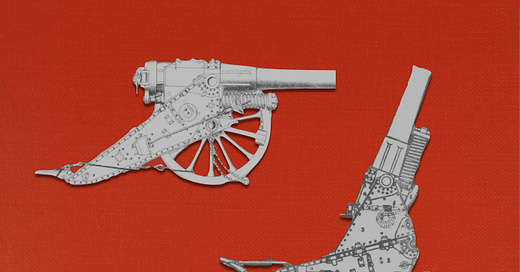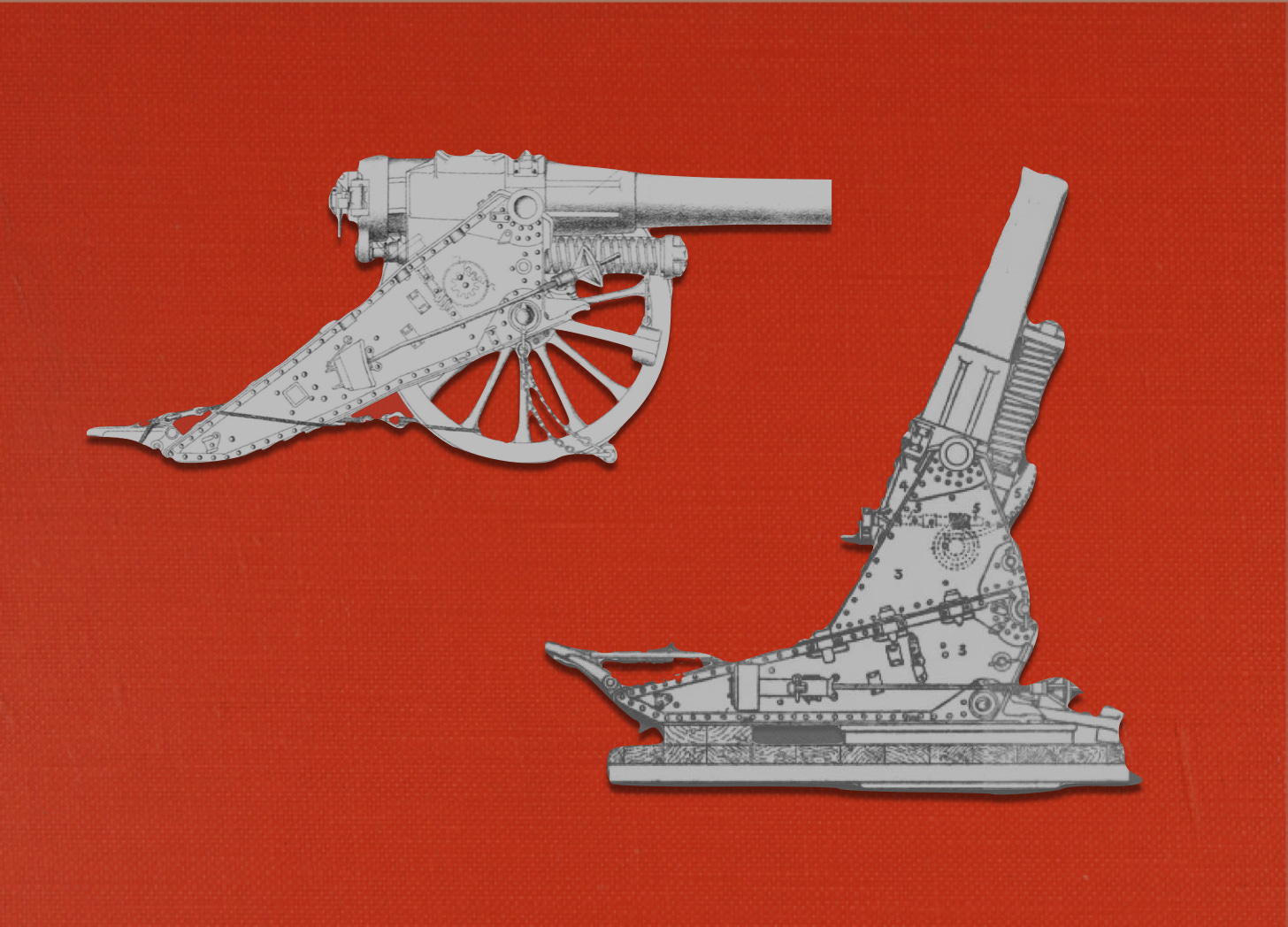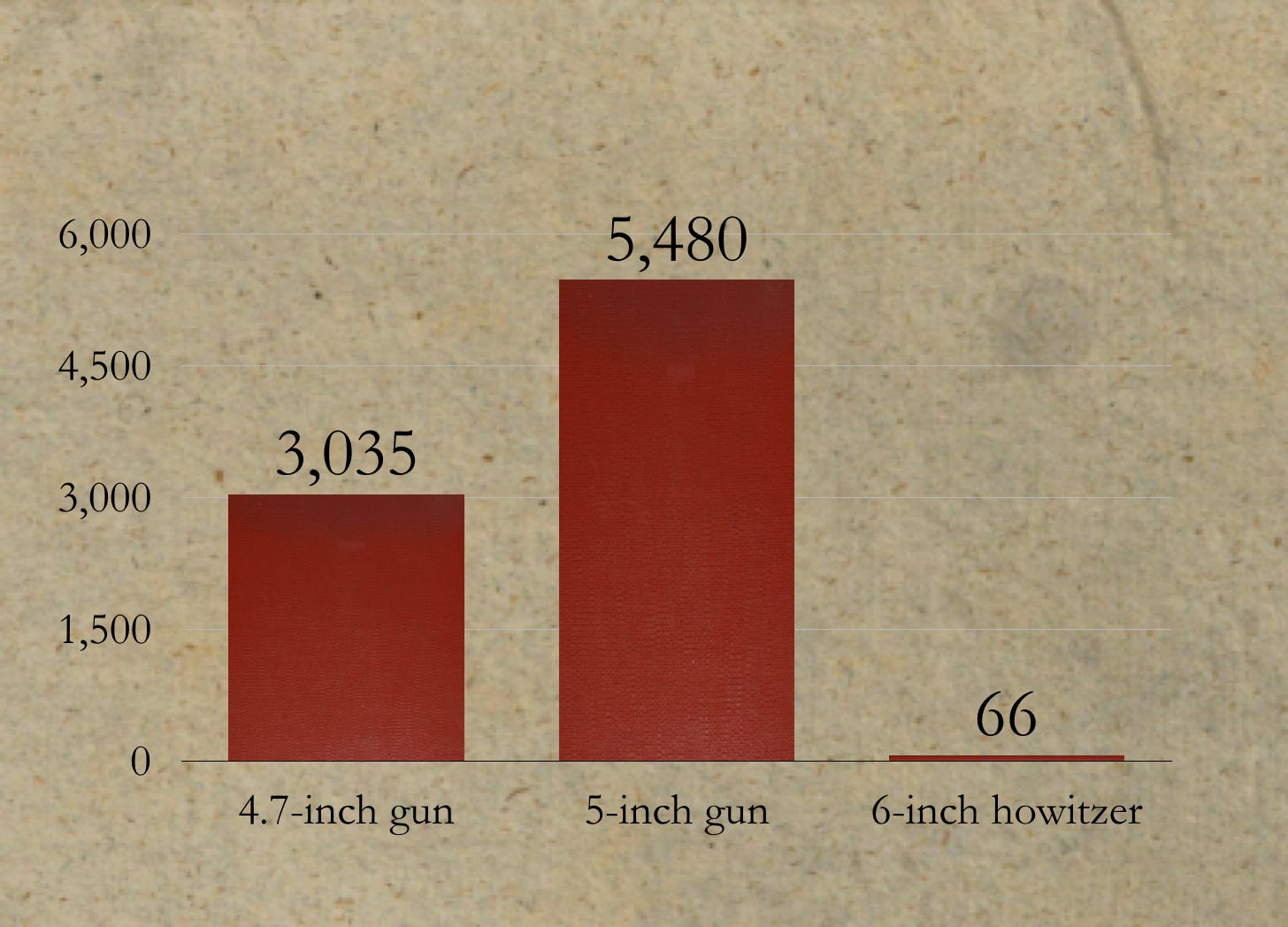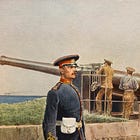On the eve of the Second Anglo-Boer War, the Royal Garrison Artillery distinguished between ‘heavy batteries’ and ‘siege batteries’. The former enjoyed sufficient mobility to keep pace with armies in the field, to the point where they might be described as field batteries that employed especially powerful horses to pull especially powerful field pieces. The latter, however, sacrificed locomotion on the altar of firepower.
Once, however, units of both types arrived in South Africa and adopted the the custom of using oxen to pull their ordnance, the gap that separated ‘heavy’ from ‘siege’ narrowed considerably. In the case of the two batteries armed with 6-inch howitzers, the difference lay chiefly in the extra wagons needed to carry the platforms, buffers, and mountings used to optimize weapons of that sort to drop, with great precision, their 122-pound (55-kilo) shells on top of fortifications. In the case of the third battery, which employed 4.7-inch guns, the distinction belonged entirely to the realm of nomenclature.
Both of the batteries armed with 6-inch howitzers had been formed when, with the aid of recalled reservists, a single peacetime siege company (Number 91) transformed itself into two war-strength batteries. The battery equipped with 4.7-inch guns owed its existence to a similar sort of military mitosis. However, rather than splitting itself into two batteries, it parent company (Number 92) converted its second wartime unit into an ammunition column.
The eight six-inch howitzers fired few rounds in anger. Indeed, the relevant volume of the official history of the Royal Artillery records that, from their arrival in South Africa to the ending of war, the two siege batteries that employed those weapons fired a grand total of sixty-six rounds.1
The few six-inch shells that flew down range, however, made a substantial impact. 2 On 26 February 1900, at Paardeberg, one of the siege batteries fired three salvos of shells, a total of twelve projectiles, at a fortified camp defended by four thousand Boers.3
The noise of the explosion was so great that we imagined a magazine had blown up, and went to the top of the kopje [hill] to see. The whole laager was filled with the oily green curling lyddite smoke, and when this blew away they let fly another salvo, the four shells falling in a line across the laager at regular intervals. The sun had just set, and in the gloom the flames of the tremendous explosions seen through the green smoke made it a most ghastly spectacle, and we felt, for the first time, exceedingly sorry for the foolhardy people below us. In his brief account of the battle of Paardeberg, Sir John Headlam gives this brief bombardment credit for convincing the Boer commander to surrender.4 Some of my Canadian kinfolk might disagree with that assessment.5 Nonetheless, the effect achieved made a powerful impression on thoughtful British gunners, not the least of whom was the future Master General of the Ordnance, Stanley Brenton von Donop.
Note: All links in the footnotes will take you to the Internet Archive.
The figures shown in the chart come from John Headlam The History of the Royal Artillery from the Indian Mutiny to the Great War, Volume III, Campaigns (Woolwich: The Royal Artillery Institution, 1940 ) Appendix C
The description of the shells ‘falling in a line at regular intervals’ suggests that the six-inch howitzers that fired upon the Boer camp at Paardeberg were mounted on their siege carriages. However, I have yet to find any description of the way that these pieces were configured for the bombardment.
Thomas T. Jeans (editor) Naval Brigades in the South African War, 1899-1900 (London: Sampson Low, Marston and Company, 1901) page 79
Headlam Campaigns pages 365-366
See, among many others, Stanley Brown ‘A Journalist Reports on Paardeberg, February 1900’ in J.L. Granatstein and Norman Hillmer (editors Battle Lines: Eyewitness Accounts from Canada’s Military History (Toronto: Thomas Allen, 2004) pages 88 and 89










In what comes are we the British or the Boers? We shall see and should decide on the step change before the Steppe…